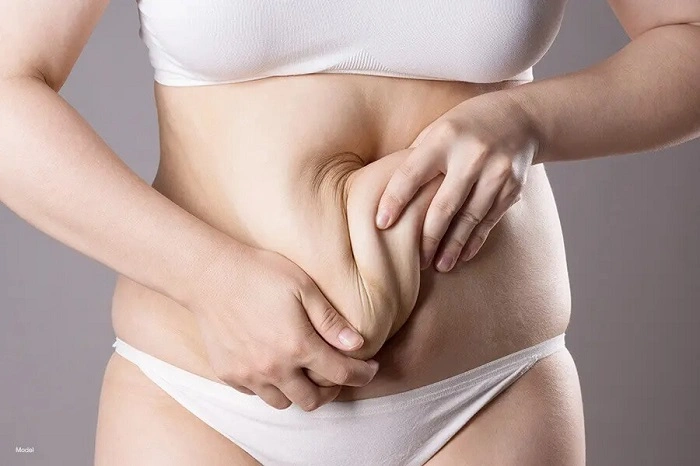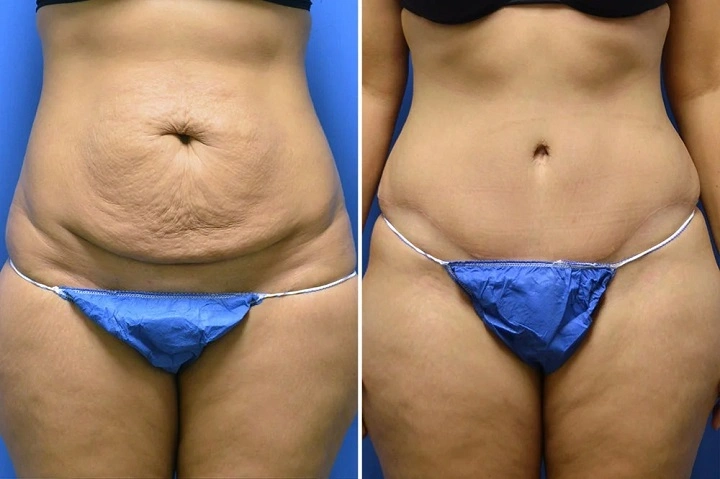The midsection is hardest to tighten. Diet and exercise could not get rid of unwanted fat, loose muscles, and difficult belly fat. Pregnancy, weight gain, and age contribute to making the midriff one of the first places to be hit. For many, the tummy tuck secret lies here.
A tummy tuck, or abdominoplasty, is the most common cosmetic procedure in the world. It is not vanity. It’s about feeling good, feeling great, and feeling like your body is again your own. This guide provides all information of the tummy tuck surgery, from types to advantages, disadvantages, price, healing, and living long-term.
What is a Tummy Tuck
Abdominal tuck, also known as abdominoplasty, is a surgical process that flattens and shapes the middle of the belly. The fat and skin are excised, stretched muscles are tightened, and the middle is shaped.
Why They Do It
- Sagging belly skin following pregnancy
- Stretch marks below navel
- Abdominal diastasis (rectus muscle separation)
- Skin folds following extreme weight loss
- Craving for a flatter, smoother belly
It also must be kept in mind that tummy tuck is not a weight loss operation. It’s body contouring. The patient must be at or near normal weight prior to it being done.
History of the Tummy Tuck
It was during the early 20th century that the first abdominoplasty surgeries were done to correct hernias and defects in the abdomen. Years passed with improvement in methods. Today, tummy tucks are sophisticated, safe, and versatile to suit various body types. The most recent technology permits combination with liposuction for more refined results.
Who is a Good Candidate for a Tummy Tuck

Ideal Candidates
- Ex-smokers or non-smokers
- Individuals having realistic expectations
- Adults with excellent overall health
- Patients with stable weight
- Women with histories of pregnancy
Who Should Not Do It
- Those with upcoming pregnancies in the near future
- Those with uncontrollable medical conditions
- Patients who believe that surgery will cause a significant amount of weight loss
- Heavy smokers who cannot quit
Physicians carefully screen candidates through blood work, medical history, and physical exam.
Types of Tummy Tucks
Not everybody needs the same procedure.
Table: Types of Tummy Tucks
| Type | Description | Best For |
| Mini Tummy Tuck | Small incision, corrects below navel | Small pouch or sagging skin |
| Full Tummy Tuck | Larger incision, tightens abdominal muscle, repositions navel | More severe to extreme amount of muscle and skin |
| Extended Tummy Tuck | Extended across abdomen, sides, lower back | Post-massive weight loss patients |
| Fleur-de-Lis Tuck | Horizontal and vertical incision | Extreme weight loss with folds |
The Procedure Step by Step
- Anesthesia – General anesthesia is used most often.
- Incision – Along lower abdomen, placed so as to be covered by swimsuit or underwear.
- Skin and Fat Excision – The surgeons stretch and remove excess tissue.
- Repair of Muscles – Strained or reparated muscles sewn back together.
- Skin Redraping – Excess skin redraped closely.
- Belly Button Reconstruction – Reconstructed or repositioned for normal appearance.
- Closure – Wounds sewn shut, drains might be placed.
Time: 2–5 hours depending upon type.
Recovery from Tummy Tuck
Recovery is a normal process. Swelling, pain, and limited movement are all to be expected.
Table: Recovery Schedule
| Stage | Timeframe | What to Expect |
| Early recovery | First 1–2 weeks | Pain, swelling, limited activity |
| Mid recovery | 2–6 weeks | Resume light activities, walk |
| Full recovery | 6–12 weeks | Return to exercise, see best results |
4-Week Recovery Plan
| Week | Activities Allowed | Restrictions |
| 1 | Short walks, rest, wear compression | No lifting, no driving |
| 2 | Resume light household work | No exercise, no bending |
| 3 | Light stretching, gradual movement | No core exercises or heavy lifting |
| 4 | Return to office work, gentle cardio | No high-impact activity |
Full recovery 2–3 months.
Recovery Tips
- Wear compression garments to decrease swelling
- Sleep slightly bent to allow incisions to heal
- Eat protein to allow healing
- Drink fluids
- Don’t smoke or have alcohol beverages
- Follow-up visits
Risks and Complications
There is risk with all surgery.
Common Risks
- Bleeding
- Infection
- Wound healing problems
- Blood clots
- Fluid accumulation (seroma)
- Numbness of skin
- Scarring of skin
Decrease risk by having a board-certified surgeon and follow post-op.
Results and Expectations
Most patients show noticeable improvements once swelling subsides. Abdomen feels tighter, flatter, and more defined.
How Long Results Last
Results remain permanent, as long as weight is not changed. Pregnancy or extreme weight gain/loss will change results. Scars will diminish over time but won’t disappear.
Tummy Tuck vs Liposuction vs Non-Surgical Treatments
Table: Comparison
| Choice | Ideal For | Recovery Time | Scarring |
| Tummy Tuck | Loose skin + muscle tightening | 6–12 weeks | Visible but becomes less noticeable |
| Liposuction | Fat removal only | 1–2 weeks | Minimal |
| Non-surgical (CoolSculpting, RF) | Mild fat reduction, no skin tightening | No work absence | None |
The majority of the patients opt for a combination of liposuction with tummy tuck to achieve maximum outcomes.
Cost of Tummy Tuck
Fees vary with surgeon, location, and procedure type. In the United States, the procedure costs between $6,000 to $12,000 on average. It includes a surgeon’s fee, anesthesia fee, and facility fee. Cosmetic tummy tucks are not ever insured unless it is a case of medical necessity.
Diet Before and After Tummy Tuck

Also Read: Menopause Age: Everything Every Woman Needs to Know About Timing, Symptoms, and Health
Before Tummy Tuck
- Eat well-balanced meals with vegetables and proteins
- Stop smoking and decrease alcohol
- Drink fluids in big quantities
Post-Tummy Tuck
- Soft food initially that is easy to digest
- Protein for wound repair (chicken, fish, eggs, beans)
- Vitamin fruits and vegetables
- Avoid salted foods that cause swelling
- Drink plenty of liquids
Exercise After Tummy Tuck
Exercise maintains results but must be gradually incorporated.
- Weeks 1–2: Walking only
- Weeks 3–4: Light stretching, light exercise
- Weeks 6–8: Resume moderate cardio
- Weeks 10–12: Incorporate core exercises and strength training
Clothing and Scarring
The incision is below the belt on the abdomen and usually is not visible under clothing. Compression garments are to be worn for 6 weeks. Scars will soften with time naturally, most commonly within 12–18 months. Scar cream and silicone sheets are useful.
Psychological Impact
A tummy tuck can change self-esteem. Individuals are more assured in their garments, have better sex, and have better posture. Adjustment psychologically does take time. Friends, families, or therapy is helpful.
Special Cases
After Pregnancy
The majority of women have a tummy tuck with breast surgery, so-called “mommy makeover.”
After Massive Weight Loss
Tummy tucks are also used to eliminate excess skin that causes hygiene issues and is uncomfortable.
Tummy Tuck for Men
Men have tummy tucks, as well, usually after losing a lot of weight. Same objectives: the flatter, more defined belly.
Patient Stories
- Laura, 36: Two children, loose muscles. She had a complete tummy tuck to regain confidence.
- Michael, 45: Lost 100 pounds, but he still had loose skin. He tacked on an extended tummy tuck on top.
- Sara, 52: She had a mini tummy tuck to correct a lower belly pouch. She went back to work in two weeks and was pleased with discreet results.
Most Common Questions on Tummy Tuck
How old is the average person who has a tummy tuck?
Most of the patients are between 30 and 55 years old, but it’s more about being healthy and wanting it.
How much pain is involved in tummy tuck recovery?
Pain is considerable the first week but improves with medication.
Is tummy tuck permanent?
Yes, if weight does not fluctuate, results are long-lasting.
Can I become pregnant after a tummy tuck?
Yes, but pregnancy will again stretch skin and muscles.
Will a tummy tuck get rid of stretch marks?
It removes stretch marks which are on the skin being excised, usually below the belly button.
Conclusion
A tummy tuck is not aesthetic. It restores shape, function, and confidence. Women post-pregnancy, men and women post-weight loss, or whoever has excess belly skin, it literally can make their life better.
Planning, recovery, and realistic expectations are required for the surgery. Risks do lie there, but good care will make them manageable. Results are long-term, especially with healthy habits of living.
If you’re getting a tummy tuck, go see a good doctor, ask some questions, and give yourself some prep time. It’s not so much about how you look—it’s about how you feel, how you feel confident, and living life in your own skin.


